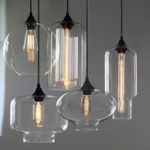A sell signal could be triggered when the day after the bearish Harami occurred, the price fell even further down, closing below the upward support trendline. When combined, a bearish Harami pattern and a trendline break might be interpreted as a potential sell signal. A bearish Harami occurs at the top of an uptrend when there is a large bullish green candle on Day 1 followed by a smaller bearish or bullish candle on Day 2. To ensure that we only take a bullish harami when volatility is high, we’ll use the ADX indicator. ADX is one of our favorite indicators that we’ve found to work very well with many trading strategies.
The reason for this is that oscillators will often give you a signal in advance. There are certain Take Profit rules bullish harami when trading the Harami pattern. You take the size of the pattern and apply it in the direction of your trade.
It’s a reversal pattern because before the Bullish Harami appears we want to see the price going down, thus it’s also a frequent signal of the end of a trend. The Bullish Harami shares similarities with other two-candlestick patterns, such as the Bullish Engulfing pattern. One of the most common mistakes made by traders is misinterpreting the Bullish Harami. Remember, a Bullish Harami isn’t a guarantee of a bullish reversal, but rather a signal of potential change.
A bullish candlestick afterward is enough evidence of trapped sellers and higher prices. Bullish reversal patterns occur when the market is in a downtrend and forms a bullish reversal pattern, reflecting an upcoming positive trend in the market. This article will discuss candlestick patterns and parts of the candles, specifically reverse candles. It will explore various bullish and bearish reversal candlestick patterns and their differences that traders or investors can use to build their trading strategies. The bullish harami pattern is part of the bullish candlestick patterns family. Also, it’s important to pay attention to overall market conditions and use technical analysis and other indicators to confirm a potential trend reversal.
- The Dark Cloud Cover usually happens after an uptrend and indicates selling pressure.
- As the market moves down a long-bodied bearish candle is formed on the first day of this candlestick pattern as per the expectations of the bears.
- An important aspect of the bullish Harami is that prices should gap up on Day 2 so that price is held up by the buyers and is unable to fall to the bearish close of Day 1.
- It should be used as a part of an analysis strategy and always requires confirmation from other technical indicators or patterns before making any trading decisions.
- They consist of a bullish candlestick, followed by a Doji or Spinning top, and finally a bearish candlestick, indicating sellers took control from the buyers.
To protect yourself from losses when trading with a Bullish Harami pattern, it’s important to have a risk management plan in place. This includes using position sizing to limit your capital at risk and setting a stop loss to minimize potential losses in case the reversal does not occur. The Doji candle is contained within the range of the large candle and is considered a stronger reversal signal than a small bullish candle. We recommend backtesting all your trading ideas – including candlestick patterns.
Tri-Star Candlestick Pattern (How to Trade & Examples)
This shift in market sentiment is further underscored if the second candlestick opens with a gap up. This indicates that the buying pressure is strong enough to prevent the price from dropping to the bearish close. Leveraged trading in foreign currency or off-exchange products on margin carries significant risk and may not be suitable for all investors. We advise you to carefully consider whether trading is appropriate for you based on your personal circumstances.
If the pattern is confirmed, you may enter a long position by buying the asset at the current market price. The bullish harami is considered to be a reliable setup for identifying potential trend reversal from down to up. However, like all technical analysis patterns, it can’t provide 100% accurate signals, so traders confirm it with technical indicators or other patterns before making a trading decision.
- Trades like this are actually, what scalpers and day traders in general are looking for.
- In other words, we’ll exit the trade as soon as the price crosses the moving average from below.
- Morning Star pattern could happen after a downtrend or within corrections during uptrends which tells you that the market is set to continue higher.
- It’s one of the worst-performing candlestick patterns in technical analysis when traditionally traded.
- This time we are looking at the 15-minute chart of the EUR/USD for April 26-27, 2021.
Today, Mr. Joker will help you clarify everything about this special candlestick pattern. Here is a chart below where the encircled candles depict a bullish harami pattern, but it is not. The prior trend should be bearish, but in this case, the prior trend is almost flat, which prevents us from classifying this candlestick pattern as a bullish harami. The pattern is more commonly used on daily and weekly timeframes, as it allows traders to see the overall market sentiment and trend. However, it can also be used on shorter timeframes such as the 4-hour and hourly charts, to get a more granular view of price action and potential reversal points.
How to trade the Bullish Harami Candlestick Pattern
In a harami pattern, the first candle is taller than the second one. Conversely, in an engulfing pattern, the second candle is larger than the first one. In early October, Goldman Sachs made a bullish harami that was not the start of a new trend.
Triple Bottom Pattern: How to Trade & Examples
A Bullish Harami is formed when a large bearish candle appears on Day 1 that is followed by a smaller bullish candle on the next day. An important aspect of the bullish Harami is that prices should gap up on Day 2 so that price is held up by the buyers and is unable to fall to the bearish close of Day 1. It’s one of the worst-performing candlestick patterns in technical analysis when traditionally traded. The bearish harami pattern appears at the top end of an uptrend, allowing the trader to initiate a short trade.
And while this candlestick is supposed to be bullish, the bullish harami typically represents incoming volatility. A Bullish Harami that appears when the price enters the support zone is a positive signal for this. Another popular way of trading the Bullish Harami candlestick pattern is using the Fibonacci retracement tool.
The Bullish Harami Chart Pattern with Fibonacci Retracements
Prices are below the 50-day simple moving average, giving us a downtrend. The second bar is bullish and wholly engulfed by the first bar, fulfilling all the pattern requirements. The Bullish Harami pattern is a vital tool in the arsenal of traders and technical analysts. This two-candlestick pattern often signifies a possible reversal from a downward trend to an uptrend. This article will delve into the depths of the Bullish Harami pattern, shedding light on its identification, interpretation, and relevance in various trading scenarios.
By signing up as a member you acknowledge that we are not providing financial advice and that you are making the decision on the trades you place in the markets. We have no knowledge of the level of money you are trading with or the level of risk you are taking with each trade. A worthy pattern (Figure 3) to mention would be the presence of an Engulfing candlestick followed by a Doji.
All website content is published for educational and informational purposes only. If you prefer to enter at the market, then you can do so after the pattern has formed. That is why they are great for traders new to this and I highly recommend every trader be on the lookout for them on their chart scans. Instead of the second candlestick is completely within the first, you will find that it is more often matching the close of the first candlestick only. The above example is what you’d expect to see in most markets, but if you are trading forex, there is a slight difference.
What Is a Bullish Harami Pattern?
With the pattern identified, traditional traders enter long on a break of the high of the second candle and place a stop loss below the low of the first bearish candle. In addition to the standard pattern, traders are also interested in its variations. Unlike the standard, Bullish Harami’s variations are the patterns with the second candlestick being special green candlesticks such as Shooting Star or Pin Bar.
























































































